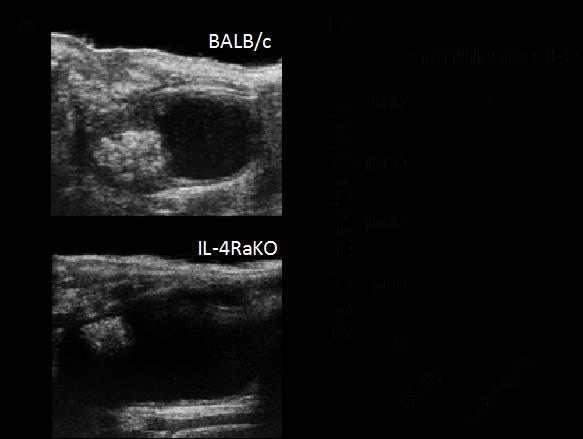Interleukin-4 signaling plays a major role in pediatric urogenital schistosomiasis-associated bladder carcinogenesis
Christina P. Ho, MD1, Evaristus C. Mbanefo, PhD1, Chi-Ling Fu, PhD2, Loc Le, PhD3, Kenji Ishida, PhD1, Michael H. Hsieh, MD, PhD1.
1Children's National Health Systems, Washington, DC, USA, 2Stanford University, Palo Alto, CA, USA, 3Biomedical Research Institute, Rockville, MD, USA.
BACKGROUND: Children are disproportionately infected worldwide with Schistosoma haematobium, the helminth causing urogenital schistosomiasis (UGS). UGS is a type 1 carcinogen, but the exact mechanism of schistosomiasis-induced bladder carcinogenesis is largely unknown. The host type-2 immune response to parasite egg-secreted antigens is thought to orchestrate granulomatous chronic inflammatory response and fibrosis, which can culminate in bladder cancer. Although the mechanistic role of IL-4 signaling and the IL-4 inducing principle from schistosome eggs (IPSE) in the pathogenesis of urogenital schistosomiasis is well recognized, we have yet to demonstrate the mechanisms by which IL-4 signaling drives bladder carcinogenesis.
METHODS: Using our previously described intramural bladder wall injection-based mouse model of urogenital schistosomiasis, we examined the mechanistic role of IL-4 signaling in the induction of bladder pathogenesis and carcinogenesis during urogenital schistosomiasis. Readouts included histopathological comparisons, assessment of urothelial proliferation and urothelial ploidy abnormalities between bladder wall egg-injected IL-4 receptor alpha knockout (IL-4RαKO) mice versus wildtype BALB/c mice. To further assess the role of IL-4 in these potentially oncogenic urothelial changes, we assessed the role of exogenous IL-4 on urothelial cell (HCV-29) proliferation, including assessment of phosphorylation patterns of downstream regulators in the IL-4 signaling pathway.
RESULTS: There was significant decrease in the size and intensity of granulomatous response to the bladder-wall injected parasite eggs in the IL-4RαKO group (figures 1 and 2). We additionally showed parasite egg-induced urothelial proliferation, including evidence of urothelial hyperdiploidy (in wildtype mice) following bladder wall egg injection. Again, these urothelial changes were found to be dependent on IL-4 receptor signaling. We further observed features consistent with oncogenesis following urothelial exposure to IL-4 and showed that IL-4 induces urothelial cell proliferation changes and potentially bladder carcinogenesis mainly via the PI3K/AKT signaling cascade.
CONCLUSIONS: IL-4 receptor signaling is required for the recapitulation of the pathogenic features of urogenital schistosomiasis.
Figure 1: IL-4RαKO mice showed reduced granuloma size compared to wild type BALB/c mice
Figure 2: Histopathological evidence of diminished granulomatous response in the IL-4RαKO mice


Back to 2019 Abstracts




